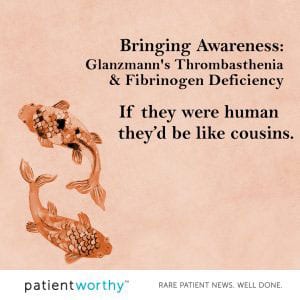The 17th Annual Congress of the European Association for Haemophilia and Allied Disorders took place this year from February 6-9, 2024. During the Congress, stakeholders came together to discuss how to promote scientific research for bleeding disorders, ways to educate healthcare providers and the general public, and how to ensure patients receive the highest quality of care. Clinical-stage biotechnology company Hemab Therapeutics (“Hemab”) shared data on a Phase 1 clinical study at the Congress. The study centers around evaluating HMB-001 for Glanzmann thrombasthenia, a rare inherited bleeding disorder. Additional preclinical findings can be found in Nature Cardiovascular Research.
HMB-001 is a bispecific antibody that binds to a protein in the blood called factor VIIa (FVIIa). When someone experiences a cut or injury, HMB-001 helps activate other proteins that stop bleeding by attaching FVIIa to activated platelets. This creates blood clots to stop bleeding faster. There is an unmet treatment need in Glanzmann thrombasthenia. While treatments exist, there are few prophylactic options. If effective in trials, HMB-001 could be helpful in addressing this issue.
In data presented at the 17th Annual Congress of the European Association for Haemophilia and Allied Disorders, researchers shared data from seven treated individuals with this disorder. Patients received varying doses of either 0.2mg/kg, 0.5mg/kg, or 1.25mg/kg. HMB-001 was relatively well-tolerated and safe. Adverse reactions were mild-to-moderate in nature with no thromboembolic events or dose-limiting toxicities occurring. Further, from the pharmacodynamic perspective, HMB-001 increased FVIIa levels. Moving forward, Hemab is running a Phase 2 clinical study to further evaluate the antibody’s safety and efficacy.
An Overview of Glanzmann Thrombasthenia
Also known as: Glanzmann disease, Platelet fibrinogen receptor deficiency, Glycoprotein complex IIb/IIIa deficiency, Glanzmann-Naegeli syndrome, Glanzmann’s thrombasthenia
This rare genetic disorder affects the blood’s ability to clot. It is inherited in an autosomal recessive pattern. This means that someone with Glanzmann thrombasthenia must inherit one defective gene from each parent to inherit this disorder. The genetic mutation associated with Glanzmann thrombasthenia results in platelet abnormalities. Platelets are unable to form a clot to stop bleeding when bleeding occurs.
Symptoms of this disorder typically appear at birth or shortly thereafter. People may experience episodes of severe and prolonged bleeding that occurs frequently. In addition to bleeding, people with Glanzmann thrombasthenia may show signs of:
- Susceptibility to easy bruising
- Heavy periods or heavy bleeding after childbirth
- Abnormal bleeding, such as frequent nosebleeds or bleeding from the gums
- Purpura (red or purple spots on the skin)
- Bleeding that occurs profusely after surgery, dental work, or similar experiences
- Hematuria (blood in the urine – occurs in rarer cases)
- Gastrointestinal bleeding (occurs in rarer cases)
Treatment is available for Glanzmann thrombasthenia. Options include blood platelet transfusions, NovoSeven RT, hormonal therapy, antifibrinolytic drugs, fibrin sealants, and recombinant factor VIIa. However, prophylactic treatments could transform symptom management; research is looking into potential prophylactic interventions. If you or your loved one has this disorder, please speak with your doctor about which treatment is best for you.







